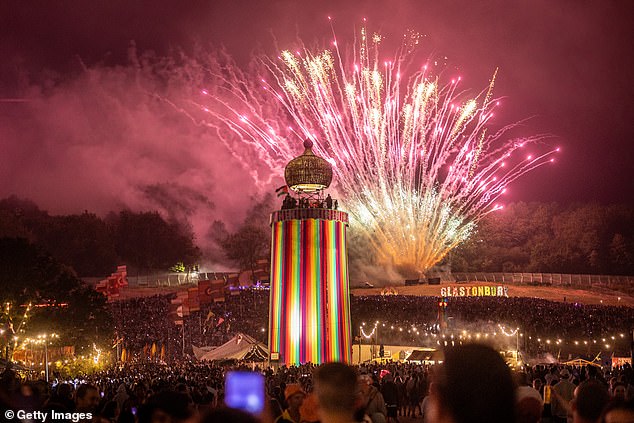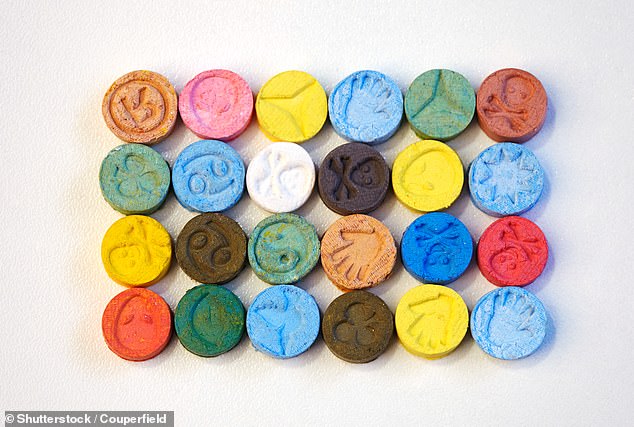Super-potent ecstasy pills containing potentially deadly levels of MDMA are back in circulation in the UK, experts have warned as Glastonbury begins.
Tests carried out this year on the party drug showed that some pills contained up to 320 mg of MDMA.
The Loop, a Home Office-licensed drug checking service, found that the average strength of pills had returned to pre-pandemic levels of 180mg, up from 140mg recorded last year.
One in 10 drugs tested was found to have a concentration greater than 250 mg. People have died from taking as little as 150 mg of MDMA, although no amount is considered safe.
Ahead of Glastonbury, the charity, which recently carried out drug tests at Manchester’s Parklife festival, warned that young people who came of age during Covid were “particularly at risk”.
Tests this year on the party drug showed some pills contained up to 320 mg of MDMA. The Loop, a Home Office-licensed drug checking service, found that the average strength of pills had returned to pre-pandemic levels of 180mg, up from 140mg recorded last year. Pictured is the sea of crowd watching Sir Elton John’s headline performance at Glastonbury in 2023.

Ahead of Glastonbury, the charity that recently carried out drug testing at Manchester’s Parklife festival warned that young people coming of age during the Covid pandemic were “particularly at risk”. Pictured, fireworks explode over the venue at the end of the first day of the 2024 Glastonbury Festival yesterday

One in 10 drugs tested was found to have a concentration greater than 250 mg. People have died from taking as little as 150 mg of MDMA, although no amount is considered safe
Adam Waugh, training coordinator at The Loop, and Professor Fiona Measham, professor of criminology at the University of Liverpool, said users had become accustomed to lower-strength pills and could therefore underestimate the new formulations.
This could pose “a significant risk to public health,” they wrote in an article for Drug Scienceif people “are caught off guard by pills that contain two or even three times the usual adult dose.”
It is the first time The Loop has found pills containing more than 300 mg of MDMA since before the pandemic.
They added: “This risk increases for young people, many of whom will have come of age and only started going out and taking ecstasy pills during this post-pandemic period of lower strength pills.”
“This cohort is also the age demographic most likely to suffer serious harm as a result of ecstasy use.”
MDMA is a stimulant and psychedelic designed to reconfigure connections in the brain, dampening the part that controls fear.
It has been an illegal substance since 1977, when the Government declared it a class A drug.
No level of MDMA is considered safe, as the drug interacts with different users depending on their body weight, what they are doing at the time, whether they mix it with other drugs, and whether they consume multiple pills in a short period.
At Parklife earlier this month, The Loop analyzed samples of green, purple and gray ecstasy pills that had been confiscated by police or placed in amnesty containers.
They found that the pills were comparable in potency to those that had caused hospitalizations or even deaths.
Of the more than 150 ecstasy samples analyzed by The Loop in 2024, only 2 percent did not contain MDMA, a significant decrease from 2021, when almost half had no traces of the drug.
“Risk reduction messages, such as taking only a quarter at a time, drinking water, pacing yourself, and avoiding polydrug use, are more important than ever,” they said.
Side effects of MDMA include severe agitation, increased body temperature, convulsions or seizures, and even irregular heartbeat.
Drug testing at festivals is part of an approach known as harm reduction.

Drug testing at festivals is part of an approach known as harm reduction. Organizers and police will try to prevent drugs from entering, but most agree that it is almost impossible to prevent this from happening. Pictured are people walking around the site yesterday during the first day of Glastonbury.

At Parklife earlier this month, The Loop analyzed samples of green, purple and gray ecstasy pills that had been confiscated by police or placed in amnesty containers. They found that the tablets were comparable in potency to those that had caused hospitalizations or even deaths. Pictured, Parklife earlier this month.
Organizers and police will try to stop drugs from getting in, but most agree it is nearly impossible to stop this from happening.
On-site testing is done “in-house” using confiscated drugs or substances left in amnesty containers.
If testers find that something is potentially dangerous (stronger than usual, contaminated, or sold as something it’s not), they send a warning to festival-goers.
According to a Home Office report, class A drug use in England and Wales is estimated to cost the UK taxpayer more than £15 billion a year, mainly through drug-related crime.
Under the Misuse of Drugs Act 1971, drugs are classified into three different classes based on their danger to people.
Class A is the most serious and includes substances such as cocaine and crack, ecstasy, MDMA and heroin, while codeine, ketamine and cannabis are considered class B.
Meanwhile, the so-called “date rape” drug, GHB, anabolic steroids, nitrous oxide and the stimulant khat, are among the class C drugs.
Current drug laws mean those in possession of Class A drugs face up to seven years in prison, an unlimited fine, or both.
Anyone caught supplying or producing can face a sentence of life imprisonment, an unlimited fine or both.


